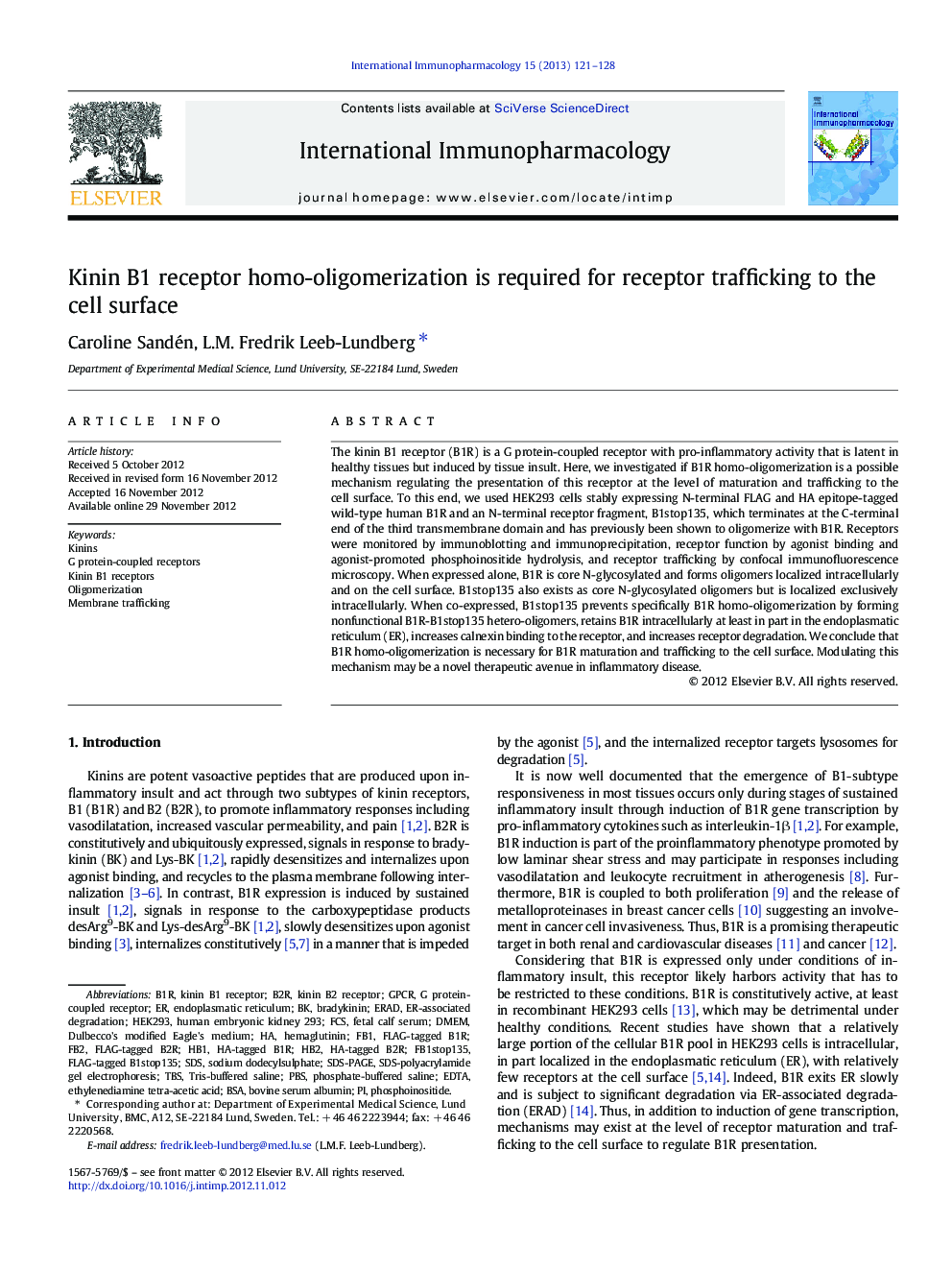| Article ID | Journal | Published Year | Pages | File Type |
|---|---|---|---|---|
| 2540935 | International Immunopharmacology | 2013 | 8 Pages |
The kinin B1 receptor (B1R) is a G protein-coupled receptor with pro-inflammatory activity that is latent in healthy tissues but induced by tissue insult. Here, we investigated if B1R homo-oligomerization is a possible mechanism regulating the presentation of this receptor at the level of maturation and trafficking to the cell surface. To this end, we used HEK293 cells stably expressing N-terminal FLAG and HA epitope-tagged wild-type human B1R and an N-terminal receptor fragment, B1stop135, which terminates at the C-terminal end of the third transmembrane domain and has previously been shown to oligomerize with B1R. Receptors were monitored by immunoblotting and immunoprecipitation, receptor function by agonist binding and agonist-promoted phosphoinositide hydrolysis, and receptor trafficking by confocal immunofluorescence microscopy. When expressed alone, B1R is core N-glycosylated and forms oligomers localized intracellularly and on the cell surface. B1stop135 also exists as core N-glycosylated oligomers but is localized exclusively intracellularly. When co-expressed, B1stop135 prevents specifically B1R homo-oligomerization by forming nonfunctional B1R-B1stop135 hetero-oligomers, retains B1R intracellularly at least in part in the endoplasmatic reticulum (ER), increases calnexin binding to the receptor, and increases receptor degradation. We conclude that B1R homo-oligomerization is necessary for B1R maturation and trafficking to the cell surface. Modulating this mechanism may be a novel therapeutic avenue in inflammatory disease.
► B1 receptor oligomerization as a requirement for receptor trafficking is confirmed. ► A truncated B1 receptor disrupts receptor oligomers and inhibits trafficking. ► Disrupting B1 receptor oligomers increase calnexin binding and degradation.
